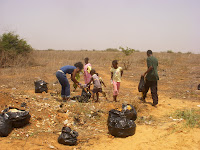
It seems that everywhere around us, there is turmoil. No one seems satisfied whether it is Syria, Egypt, Senegal or Wall Street. It appears that governance is at the root of it all. People want to be respected, and I mean really respected no just lip service. They want to fill as if their life has purpose to the whole. On June 23rd, 2011 in Dakar, Senegal I saw what meant when the people took to the streets against the government and the police. The president of the country tried to change the constitution and was immediately resisted by ordinary people.
The problem seems to be how those in power become addicted to it. They seem to not notice that the people put them in that position and that respect is still required. There is a saying that Everyone has a village: This means that we all come from humble positions in life no matter what position we attain. When we forget this, we lose our true balance and connection to life.
Locally, at Howard U., we find ourselves in a similar position. We have a President who has a heart of integrity, but we are in a system that exists for itself. Part of the problem seems to be living in Washington DC. Being so close to the power can lead to delusions of who you are. Howard University is like no other in the world. It serves the children whose ancestors came to the US in chains and help to build the infrastructure through slavery. In that spirit, we are connected to our past and cannot abandoned it. We cannot be the Black Harvard or Georgetown on Georgia Ave. We just have to be about the business of dream making, justice and service to society. We cannot do this, if we don't treat the stakeholders (students, staff, faculty) within Howard University with respect and dignity. Unfortunately, the system has become more centralized and less transparent. Consequently many problems have developed this semester.
Mismanagement of scholarships, late pay for graduate students, faculty, and insufficient accountability.
As a faculty member, sitting with other concerned faculty members last month we were all so upset and yet felt helpless. We could send emails and letters but it would all be seen as isolated events. But as we were losing hope the thought of a day of solidarity came up. We all felt it at the same time. On Monday, October 24, 2011 the day of solidarity becomes a reality. Our goal is not to destroy the university but to get the system to respect everyone by fixing the problems that exists and to stop the centralization without transparency. That becomes a disease that propagates into the minds of all.
Yes, there is a sense of fear, but when we think about our legacy of fighting for the underdog against injustice it all becomes clear: COURAGE IS THE BASIS for CHANGE - whether it is Egypt, Senegal, Tunisia, Syria, Senegal, Montgomery Alabama or Howard University.




































